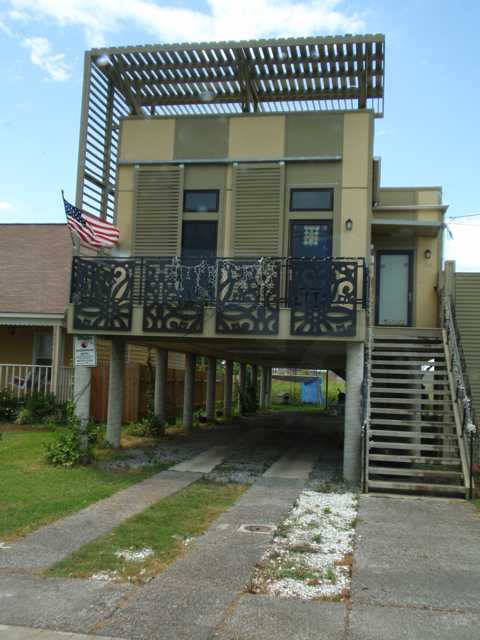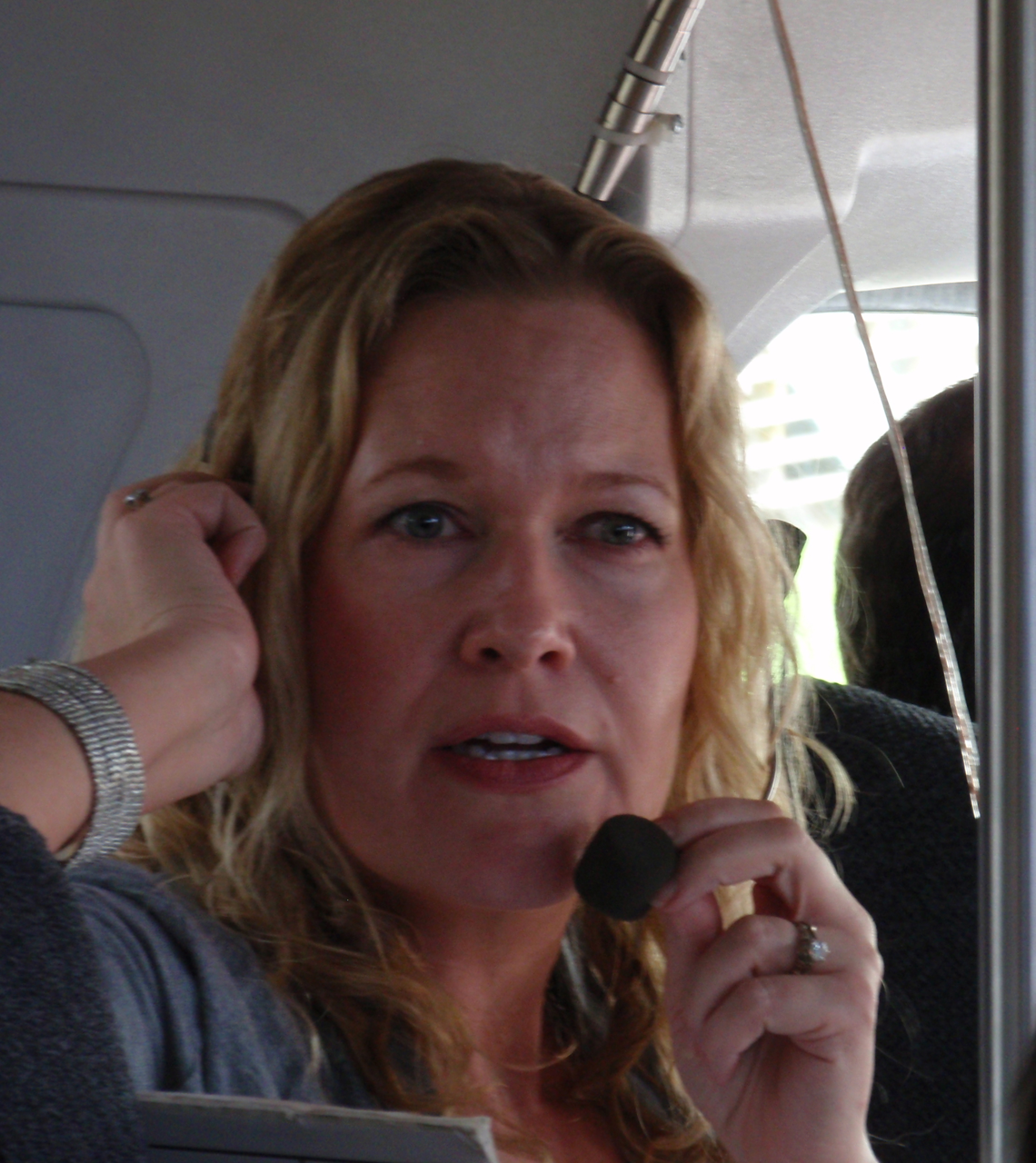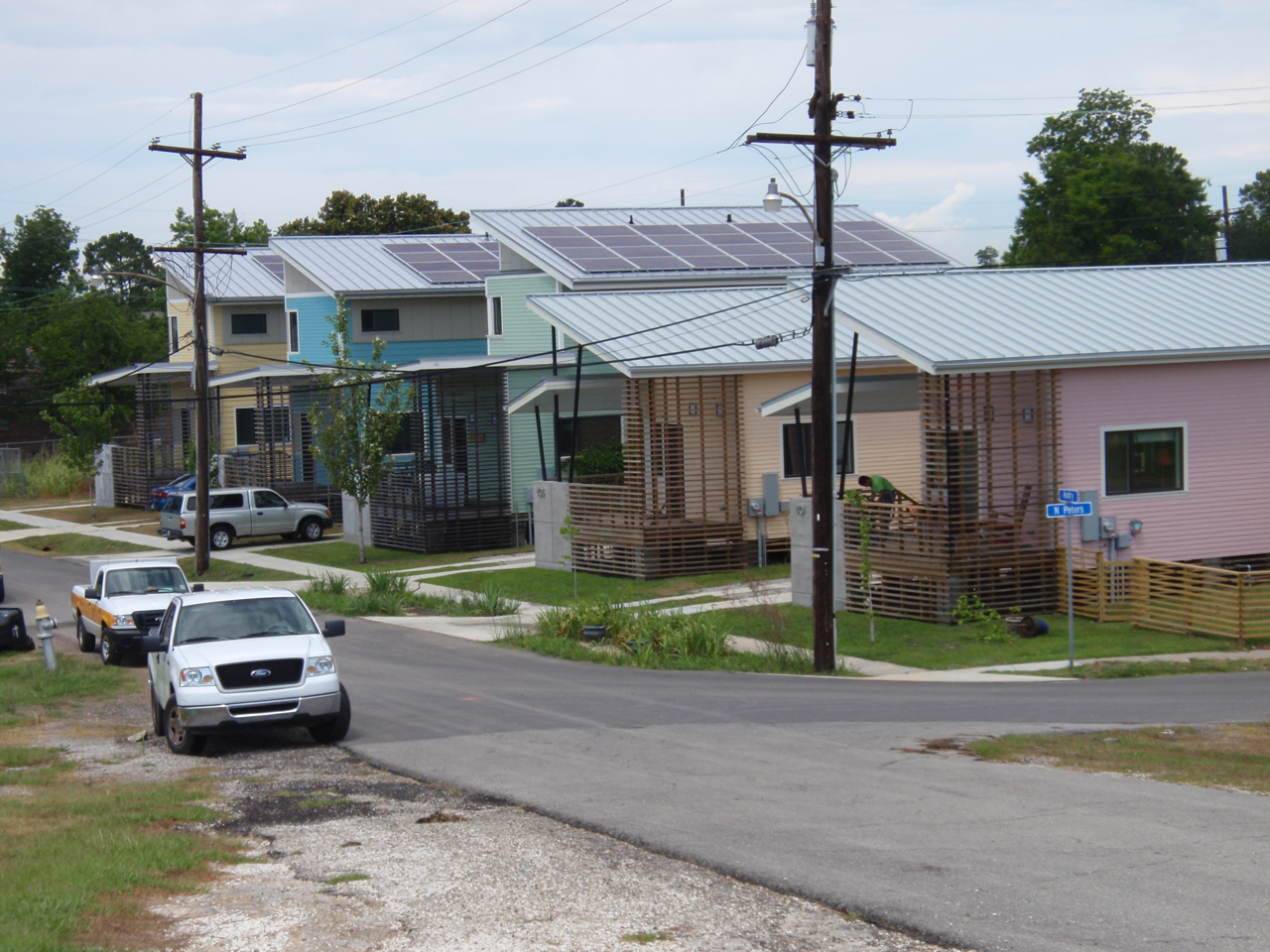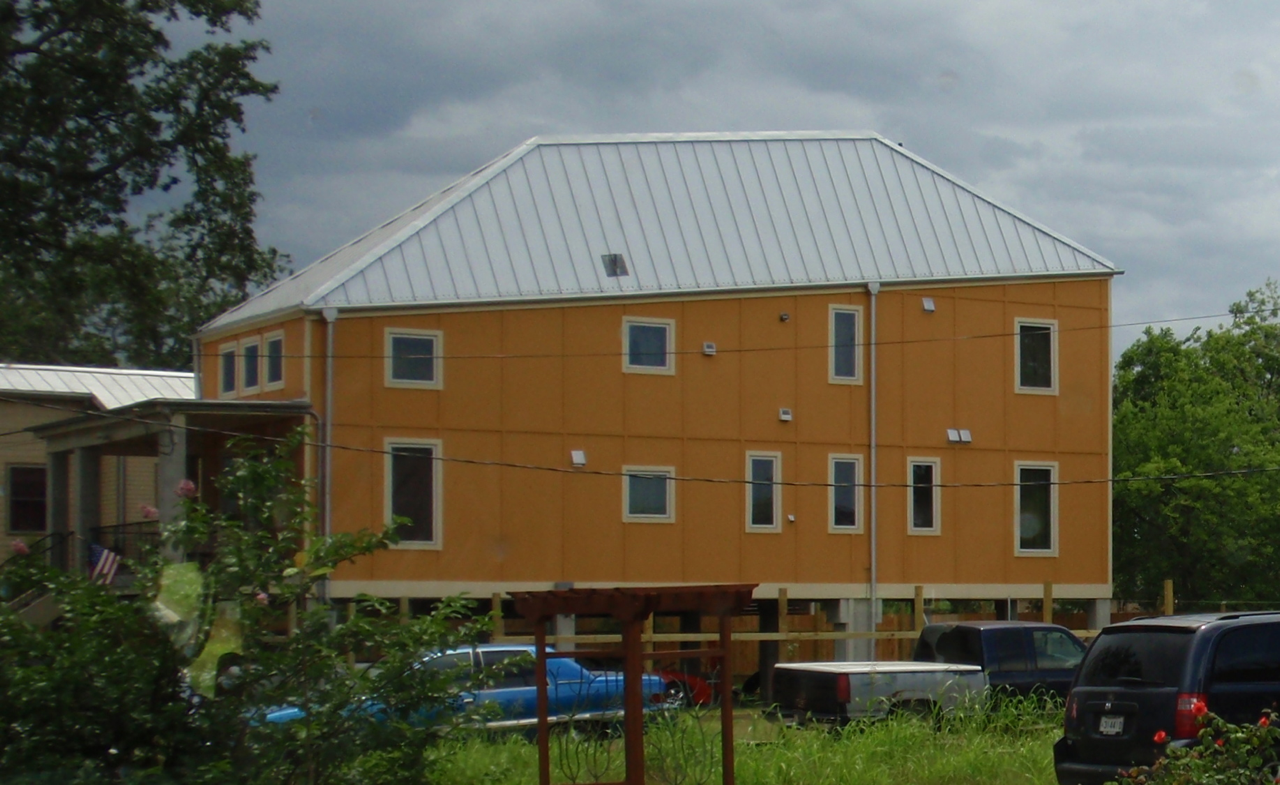Blog Post
Making it Right in New Orleans
A tour of rebuilding in the Ninth Ward of NOLA, with green homes designed by some of the world's leading architects

A highlight of my time in New Orleans for AIA Convention last week was a tour of rebuilding efforts in the Lower Ninth Ward with the staff of BNIM Architects and a few invited guests. BNIM had a large contingent in town to receive their AIA Firm of the Year award, and took the opportunity to show this project to the rest of their team. Bob Berkebile (the “B” in BNIM and an Environmental Building News advisory board member) has been instrumental in these rebuilding efforts since just days after Katrina hit in August 2005.
Numerous organizations have been involved in different aspects of the rebuilding, and their work has intersected in many ways. Leading our tour, along with Bob Berkebile, were representatives of several of those organizations and John Williams, a New Orleans architect whose firm was wiped out in the chaos that followed the storm. Williams has since rebuilt his practice around the rebuilding efforts, including an (unfortunately necessary) specialty in navigating the bureaucratic maze of government processes for claiming meager rebuilding funds.

A human-made disaster
Among the many important facts I learned is that the Lower Ninth Ward is actually on relatively high ground for New Orleans, slightly above sea level. It’s called “lower” only because it’s south of adjacent areas. This area was NOT inundated by floodwaters from the river or ocean—it was flooded only by the storm surge that broke through the Industrial Canal levee thanks to the ill-conceived Mississippi River Gulf Outlet (MRGO) built in the 1960s to streamline freight traffic through New Orleans, bypassing bends in the river. There is a lawsuit pending against the Army Corps of Engineers for this flooding—legal action made possible only because MRGO was built not to protect life but to promote commerce.
It’s poignant that as we visited New Orleans the city was seeing its highest river level in 75 years, and the Army Corps opened the Morganza Spillway for the first time in 40 years, flooding thousands of acres of farms, marshes, and villages, to relieve pressure on the levees. The trigger for opening the spillway? A river flow of 1.5 million cubic feet per second. Hard to comprehend that amount of water, just as it was truly awesome to stand on the levees and watch it go by. But I digress…

Global Green in Holy Cross
On the tour Beth Galante, director of Global Green USA’s New Orleans office, walked us through their Holy Cross Project showcase house, the first of five homes now standing on the site where Global Green is rebuilding. Holy Cross is a neighborhood adjacent to the Lower Ninth Ward that sits on even higher ground. The other four homes are being sold, but this one will remain an educational resource for the community. Global Green is also creating a showcase rainwater infiltration garden, a community center, and, hopefully, a multifamily building that can ease people’s fears about increasing the density in this notoriously spread out city.
Global Green’s houses—all LEED platinum certified—were designed through a competition organized immediately after Katrina. Brad Pitt’s influential involvement in the Lower Ninth began with his participation as a juror in that competition. Unfortunately for Global Green, rather than bringing his fundraising power to the Holy Cross Project, Pitt was inspired to start a parallel program, which became the Make It Right Foundation. That slowed the progress at Global Green, but not its resolve. “Among many other things, we’ve learned patience,” said Galante, who was a lawyer in New Orleans before Katrina.
SUPPORT INDEPENDENT SUSTAINABILITY REPORTING
BuildingGreen relies on our premium members, not on advertisers. Help make our work possible.
See membership options »Making it affordable
Make It Right is now a much larger organization in the Lower Ninth than Global Green, and has constructed 72 homes based on designs from architect all over the world (as well as some local talent). Among them are BNIM, KieranTimberlake, Suguru Ban, Morphosis, … Perhaps more generous than the gift of the designs themselves was the willingness of these architects to cede control to the Foundation as it works to make the houses affordable to build and adaptable to the occupants needs.
The question of cost came up frequently on the tour, and the answer was consistent—it cost a lot to build the first prototype of each design, after which the subsequent iterations got better and cheaper. In the case of Make It Right that means $250 – $300 thousand for the initial houses, down to around $130,000, or about $100 per square foot, after the 2nd or 3rd one.
At Global Green that curve is even steeper. The first unit was built to test various technologies and include many options, and it was done at a time when there was almost no local green building expertise or products available. Global Green also engaged several contractors, not just one, in order to spread the learning around. As a result, the total price tag for that first house was even higher than those initial Make It Right prototypes, but later versions are being built very cost-effectively, and the technology transfer that happened on that first project has benefitted Make It Right and many other projects in the area.
Why not in the local vernacular?
Throughout the tour, architect John Williams was eloquent about the passion residents have for this community, and how difficult it is for many of them to return, for many reasons. We also heard from Tim Duggan , landscape architect with Make It Right. There is a interview with Duggan on the ASLA website that goes into many of the details he shared with us during the tour. In that interview and in this video clip from my tour, Duggan does a nice job justifying the innovative home designs, as an alternative to the “imitation crab meat” you get if you try to mimic New Orleans’ historical styles. To Duggan's right is New Orleans architect John Williams.
Inspiring design
Unlike Global Green, Make It Right doesn’t own the land on which it builds—it builds on behalf of the owners. Acting as developer on land owned by others complicates the process significantly, according to Williams. In many cases these are the original residents of homes that were destroyed in the flood; in all cases they are former residents of the neighborhood.
The tour left me in awe—of the cool designs, the passion of residents and many others to rebuild, and the sophisticated design solutions and technologies that they are developing in the process, and spreading throughout the region. What an inspiration!
Published May 20, 2011 Permalink Citation
(2011, May 20). Making it Right in New Orleans. Retrieved from https://www.buildinggreen.com/blog/making-it-right-new-orleans




Add new comment
To post a comment, you need to register for a BuildingGreen Basic membership (free) or login to your existing profile.